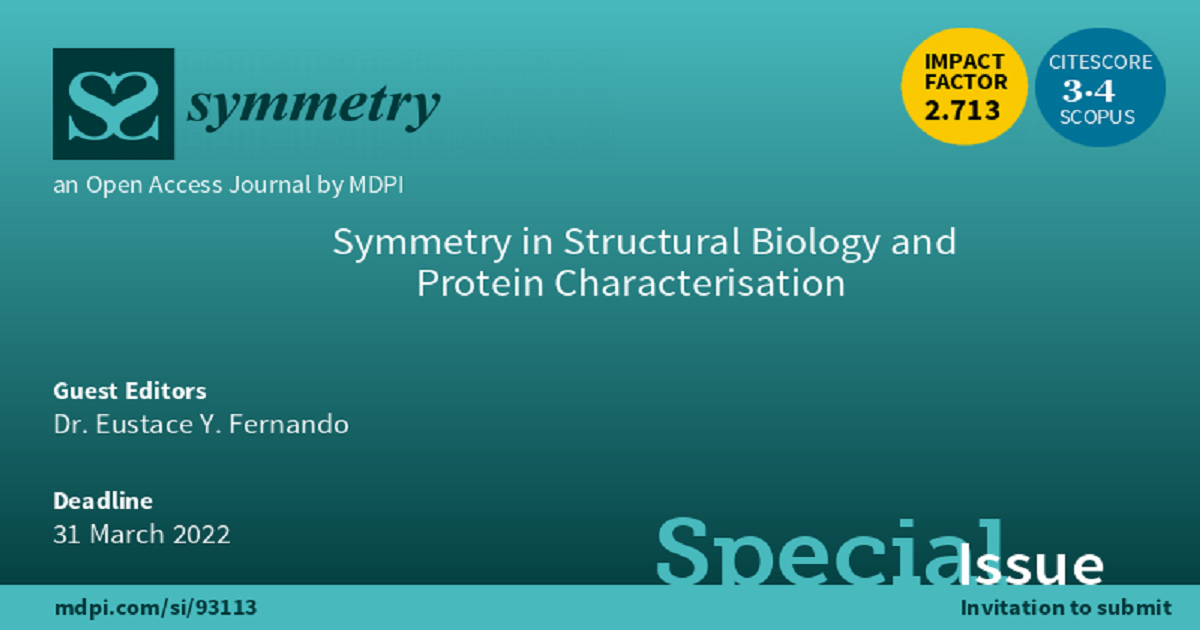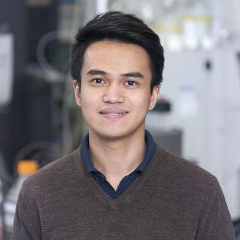Symmetry in Structural Biology and Protein Characterization
A special issue of Symmetry (ISSN 2073-8994). This special issue belongs to the section "Life Sciences".
Deadline for manuscript submissions: closed (19 February 2023) | Viewed by 2250

Special Issue Editors
Interests: bio-electrochemical systems (BES); microbial ecology and interactions; microbial biotechnology; renewable microbial bioenergy/biofuels; microbial biopolymers; molecular and single-cell microbiology and proteomics
Interests: mass spectrometry; bioinformatics; biochemistry; proteins; shotgun Proteomics; MALDI-TOF MS; protein purification; protein identification; isotope labeling; quantitative spectrometry
Special Issue Information
Dear Colleagues,
Modern structural biology and protein characterization draws from many disciplines, such as crystallography, X-ray diffraction, cryo-electron microscopy, protein purification and biochemistry. The symmetric nature of many biological macromolecules and macromolecular assemblies such as the tertiary and quaternary structures of proteins and enzymes often carries functional significance, such as being a vital feature in inducing and sustaining catalysis. This Special Issue examines the symmetric nature of biological macromolecular assemblies, the contribution of their structural traits to maintaining proper biological function and different hierarchical levels of biostructural organization. It also welcomes original research articles, short communications and review papers on the molecular characterization and structural assembly features of polypeptides, globular proteins, protein quaternary structure, viruses, nucleic acids, tubular crystals and ordinary three-dimensional crystal assemblies of biological macromolecules. Studies using novel technical developments such as cryo-electron microscopy in deducing the structure of biological macromolecular assemblies are also welcome to be submitted for publication in this Special Issue.
Dr. Eustace Y. Fernando
Guest Editor
Dr. Henrik Bech Kjeldal
Dr. Marc Rhyan Anthony Puno
Co-Guest Editors
Manuscript Submission Information
Manuscripts should be submitted online at www.mdpi.com by registering and logging in to this website. Once you are registered, click here to go to the submission form. Manuscripts can be submitted until the deadline. All submissions that pass pre-check are peer-reviewed. Accepted papers will be published continuously in the journal (as soon as accepted) and will be listed together on the special issue website. Research articles, review articles as well as short communications are invited. For planned papers, a title and short abstract (about 250 words) can be sent to the Editorial Office for assessment.
Submitted manuscripts should not have been published previously, nor be under consideration for publication elsewhere (except conference proceedings papers). All manuscripts are thoroughly refereed through a single-blind peer-review process. A guide for authors and other relevant information for submission of manuscripts is available on the Instructions for Authors page. Symmetry is an international peer-reviewed open access monthly journal published by MDPI.
Please visit the Instructions for Authors page before submitting a manuscript. The Article Processing Charge (APC) for publication in this open access journal is 2400 CHF (Swiss Francs). Submitted papers should be well formatted and use good English. Authors may use MDPI's English editing service prior to publication or during author revisions.
Keywords
- biological macromolecules
- structural biology
- protein characterization
- cryo-electron microscopy
- X-ray crystallography
- nuclear magnetic resonance (NMR) studies of macromolecules
- symmetry in macromolecular assembly
- symmetry in catalysis
Benefits of Publishing in a Special Issue
- Ease of navigation: Grouping papers by topic helps scholars navigate broad scope journals more efficiently.
- Greater discoverability: Special Issues support the reach and impact of scientific research. Articles in Special Issues are more discoverable and cited more frequently.
- Expansion of research network: Special Issues facilitate connections among authors, fostering scientific collaborations.
- External promotion: Articles in Special Issues are often promoted through the journal's social media, increasing their visibility.
- Reprint: MDPI Books provides the opportunity to republish successful Special Issues in book format, both online and in print.
Further information on MDPI's Special Issue policies can be found here.







